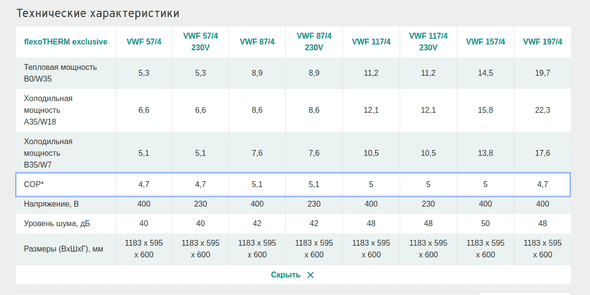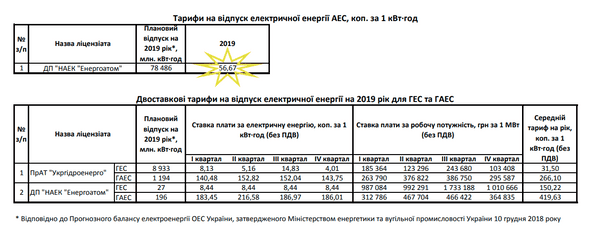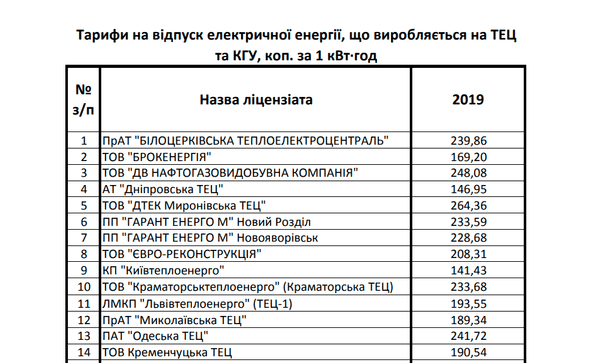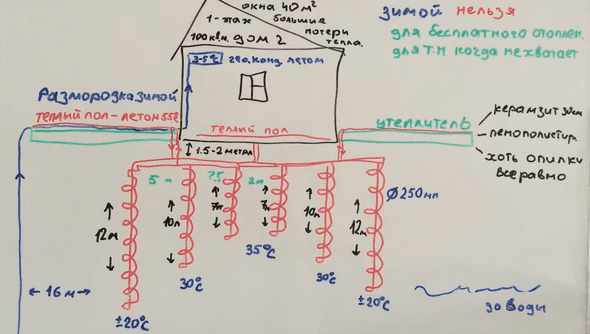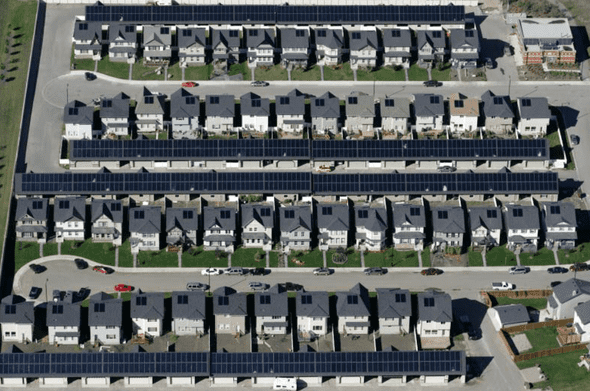Thermal Energy Storage and Skyrocketed Electricity Prices
January 25, 2021 • ☕️☕️ 9 min read
You can read this post in: English • Русский
As you may have heard, from April 1, Ukraine is expecting a huge increase in the price of electricity. 1 kWh will cost Ukrainians UAH 3,5. Some sources even talk about canceling the cheap night tariff.
Due to the fact that the price hike is happening abruptly, and not in stages, as it was in 2017, this will be a very unpleasant surprise for many people.
Today, 54% of electricity in Ukraine is produced by nuclear power plants. Night tariff termination can cause serious damage to nuclear power generation. People will turn on electrical appliances not when there is an excess of electricity in the network, but at any time convenient for them. To balance the system, it will be necessary to turn off some of the power units of the nuclear plants and replace them with thermal generation.
Although such practices are not something new in our country, they definitely do not benefit the development of atomic energy here. The winners in this situation will be suppliers of alternative “green” and thermal energy, thermal power plants operating on coal and gas.
Well, no matter how hard it may sound, if a price increase is inevitable, what to do next?
Calculating the cost of heating the house with a heat pump, taking into account electricity price hike
To obtain the same amount of thermal energy, you need to spend roughly 10 kWh of electricity or burn 1 m3 of gas. This is an approximate figure that we will use to simplify our calculations.
Price for 1 m3 of gas - 10 UAH, 1 kWh - 3.5 UAH.
Generally speaking, in order to heat the premises with gas, we spend 10 UAH, or we spend 35 UAH if we heat with electricity. Of course, we need to multiply this by the required area of the house that needs to be heated.
In order to reach the same financial costs in the case of heating with a heat pump, we need to get the COP of the heat pump equal to 3.5.
COP 3.5 is almost unrealistic when it comes to air heat pumps.
Ads show us a pretty picture, but is it really so?
For example, let’s look at the first heat pump characteristics list that I’ve found on the internet:
As you can see, the indicated COP is 4.7 - 5.1. Under what conditions? What is the ambient temperature? What is the temperature of the heat transfer agent? All this remains a mystery. You can’t call it anything but a cheap marketing trick. It is very difficult to find a real description and numbers.
Here is a more realistic version of the documentation for one of the heat pumps that I came across:
Here, according to the numbers, we see that the COP at 2 °C air temperature and 35 °C heat transfer agent is 3.52. At -7 °C COP is 2.88, which is hardly enough for a warm floor, not talking about any type of radiators here.
I got about the same figures in my DIY heat pump, depending on the delta of temperatures between the outlet from the evaporator and the temperature of the water that is supplied to the heating system of the house:
- Delta 20 °C - COP 5
- Delta 30 °C - COP 4
- Delta 40 °C - COP 3
So, as you can see, ads are full of bullshit, but let’s circle back to the price of electricity for a moment.
The cost of electricity from the supplier
Let’s look again at the cost of electricity.
In this graph, you see the cost of electricity - 0.56 UAH / kWh. These prices are for 2019, but I think they are still relevant now. At this price, electricity distributors buy electricity from suppliers. UAH 0.56! And our government is planning to introduce a price of UAH 3.50!!
In my opinion, the price of electricity for a night tariff can maximum double, that is, roughly UAH 1.10 maximum! But in reality, it is probably even cheaper, especially if consumers are located near the nuclear power plant and there are almost no losses for electricity transmission.
Let’s go further and take a look at the prices at which electricity is purchased from thermal power plants.
As you can see, prices range from UAH 1.40 up to UAH 2.50.
So, why for fuck’s sake, the night electricity price should be UAH 3.50 ???!!
It looks like a cunning plan of our government to cover the losses in other industries at the expense of the ordinary citizens during the coronavirus pandemic.
Assessing our needs for heat and electricity
In order to understand what to do next, we need to assess our needs for heat and electricity. I think, using a heat pump is still relevant from the point of view of the energy security of my household. We need to move towards autonomy and invest in our future.
I will give an example based on my conditions and parameters, and then, each of you will be able to approximate this for yourself. My house construction looks like this:
- Heated area: 160 m2.
- 30 cm gas silicate + 10 cm air + 12 cm brick.
In summer, consumption is about 20 kWh/day (600 kWh/month). This includes household needs and electric vehicle charging. The same consumption remains in winter, so we add this number to all our next calculations.
Autumn-spring period, average ambient temperature +5 °C
For the autumn-spring period with an average temperature of +5 °C, the average gas consumption is 300 m3. This is an approximate number, but it is suitable for estimating the required energy. Or it is 10 m3/day = 100 kWh/day.
We get (20 + 100) the need for 120 kWh/day of electric energy, provided that we have domestic consumers and we will heat with electricity.
In the case of a geothermal heat pump, during this time of year, we have a COP of about 4. Next, divide 100/4 = 25 kWh/day. Add household consumption 20 + 25 = 45 kWh/day, and we get that with a heat pump we need 45 kWh/day, or 1350 kWh/month.
Winter period, average ambient temperature -5 °C
For the winter period with an average temperature of -5 °C, the average gas consumption is 600 m3. Or it is 20 m3/day = 200 kWh/day.
Adding household consumption 20 + 200 = 220 kWh/day. Next, with COP = 3, we get 200/3 = 70 kWh/day. And in total we get 20 + 70 = 90 kWh/day, or 2700 kWh/month.
For clarity, let’s present our results in a form of a table:
| Season | СOP of the heat pump | Household consumption, kWh/day | Needed kWh/day | Needed kWh/month. |
|---|---|---|---|---|
| Autumn-spring (+5C) | 4 | 20 | 45 | 1350 |
| Winter (-5°C) | 3 | 20 | 90 | 2700 |
Where can we get this energy from? Since we are not considering industrial power grids, our options can be solar and wind stations or a perpetual energy generator 😊 (in case you accidentally invented one).
Consider the graphs of electricity production by a solar station with a capacity of 10 kW.
For autumn-spring weather (October and February), we see that the numbers are about the same. A 10 kW station generates 800 kWh/month, but I need 1350 kWh and that’s clearly not enough for my needs.
In winter, the worst months in terms of production are November, December, and January, giving only 20 kWh/day, which is not enough.
Hence the conclusion that it is unrealistic to heat my house with solar panels in winter. Generation is very weak and it will not cover all energy costs.
In summer, on the contrary, the generation of energy will be 3 times higher and there will be simply nowhere to put it. So, here we come to another conclusion that we need some sort of seasonal energy storage to accumulate the energy in.
Seasonal energy storage
One of the options for energy storage is chemical energy storage based on Fischer-Tropsch processes. Having hydrogen, carbon dioxide, and electrical energy, you can get methane, then get synthesis gases and, as a result, get a liquid fuel that can be stored for a long time.
However, it is almost impossible to carry out all these processes in a normal household environment. All this requires expensive equipment and constant control over the processes. Yes, on the basis of some enterprise or a plant, this can be done, but in the conditions of an ordinary household, it will be very difficult to do. This option doesn’t work for us.
Andrey Lysenko’s YouTube channel
Here I would like to recommend you to check out Andrey Lysenko’s channel. He conducted a very interesting experiment with his home. In the video, he describes in detail the essence of the experiment, tells how he has installed the ground loop, heat exchangers, and other useful information.
If you are also thinking about a seasonal energy storage, check out his channel, you will find a lot of interesting things there.
Canadian seasonal thermal storage project
There is also an interesting canadian seasonal thermal storage project. On this photo you can see a village participating in this project:
Solar collectors gather the energy which is then consumed by homes. The only thing here is that we are talking about a fairly large-scale project where an entire village is involved. This definitely requires a lot of investment.
Let’s share thoughts
At the end of my story, I invite you to a discussion. Let’s think together about how to get out of this situation, what can we do? Sitting on your ass straight and paying an exorbitant price for electricity, in my opinion, is wrong. Going on strike is a temporary solution. Anyway, they will raise the price as they want, because a monopoly is always a bad thing.
